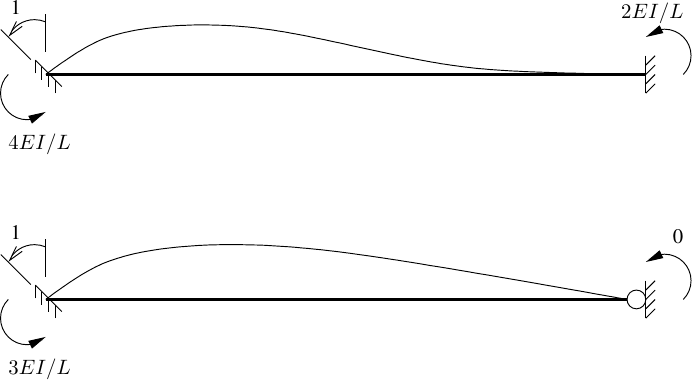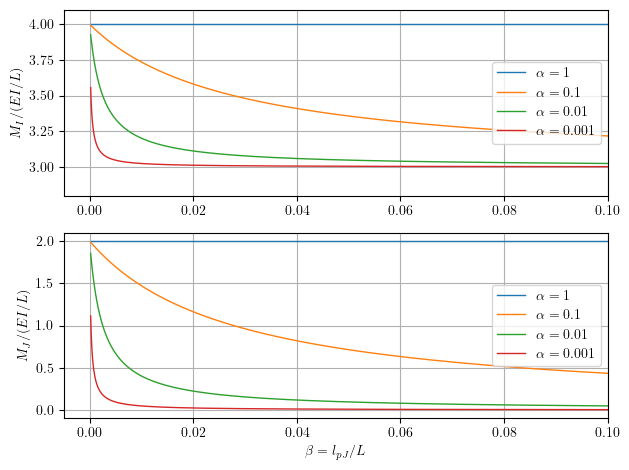OpenSees Cloud
OpenSees AMI
Release the Plastic Hinge
Original Post - 02 May 2021 - Michael H. Scott
Show your support at Buy Me a Coffee.
How close to a true moment release can you make the plastic hinge at one
end of an OpenSees beamWithHinges element? It’s a question I’ve thought
about before, and it came up again recently.
A simple fixed-fixed beam can start to answer the question. Imposing a unit rotation at one end will produce moment reactions (fixed-end moments) of 4EI/L and 2EI/L. If there is a moment release at one end, the moment reactions will be 3EI/L and zero.

The OpenSees model is a single beamWithHinges element (modified
Gauss-Radau integration) with lpI=0 at the fixed end and
hinge length \(l_{pJ}=\beta L\) at the end we want to release. The
flexural stiffness along the beam interior is EI while the
flexural stiffness of the hinge is \(\alpha EI\).

For the imposed unit rotation, we should obtain 3EI/L when \(\alpha\) is small and \(\beta\) is non-zero. When \(\beta\) is zero, we should recover a fixed-fixed beam with no hinge or release. Also note that we cannot make \(\alpha=0\) because that would throw a wrench into the force-based element state determination.
Performing the imposed rotation analysis over many values of \(\alpha\) and \(\beta\), we obtain the following relationships for the fixed-end moments at each end of the beam.

As expected, we recover 4EI/L and 2EI/L when \(\beta\) goes to zero and \(\alpha\) goes to one and we see that the moment release works fairly well when \(\beta \geq 0.02\) and \(\alpha = 0.001\).
We can generate similar plots for the other plastic hinge integration methods outlined in Scott and Fenves (2006). Some of the plots get interesting due to the numerical integration characteristics of the other methods.